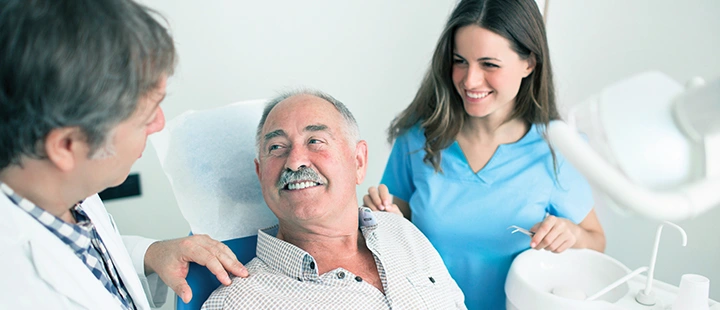Involving the Team in Dentist Presentation Follow-Up
Ideally, you recommend treatment, the patient accepts, and you move forward.
Fortunately, that scenario still occurs in many cases, but another more complicated and drawn-out process unfolds frequently in the new dental economy… you present, the patient remains undecided, and you follow up with a dentist presentation, hoping to eventually turn “maybe” into “yes.”
When you find yourself in this situation, it’s time to initiate a team-based presentation technique. More of a process than an event, this approach brings other staff members into the picture to play limited yet potentially decisive roles in gaining case acceptance. Here is a typical team-based scenario:
1. Make your initial presentation. Emphasizing patient benefits, using visual aids, answering questions, addressing objections, mentioning payment options (if there will be significant out-of-pocket costs) and otherwise presenting well, the patient does not say “yes.”
2. Document the presentation in the patient’s file. Note not only what you presented but also how the patient reacted… what seemed to be most persuasive, issues that made the patient hesitant, etc.
3. Develop a team strategy for the patient’s next visit. At the morning meeting, identify the patient and the treatment you recommended and decide, as a team, who will bring up the subject that day. This may include:
- Hygienist - Perceived as a highly trained dental professional and often representing the primary personal connection at the practice, the hygienist can have a very strong influence on the undecided patient. If she senses receptiveness, she should alert you so you can follow up.
- Front Desk Coordinator - In many practices, there’s a friendly relationship between patients and this staff member. Though she should not attempt to persuade the patient or answer clinical questions, she can at least bring up the subject (“Have you had a chance to think about what Dr. Smith recommended during your last visit?”) and reinforce any positive reactions. She, too, should alert you if she thinks the patient might agree to treatment.
- Other Staff Members - If someone else on the team happens to have a good relationship with the patient or has undergone similar treatment herself, she could also watch for an opportunity to bring up the subject. Use your judgement about this because you must avoid “ganging up” on the patient or seeming to apply too much pressure.
Bear in mind that, for the best results, team-based presentations should be individualized based on patients’ personalities, situations and relationships with team members. With flexibility and sensitivity to spoken and unspoken objections or barriers, you and your team will be able to increase your case acceptance rate and production.
Author
This resource was provided by Levin Group, a leading dental consulting firm that provides dentists innovative management and marketing systems that result in increased patient referrals, production and profitability, while lowering stress. Since 1985, dentists have relied on Levin Group dental consulting to increase production.



